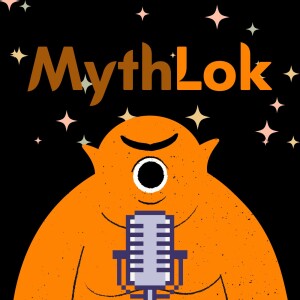
Mythlok - The Home of Mythology
History

In addition to being mythical creatures, dragons are also an integral part of the culture and life of the Tibetan people. Like other Asian countries, they play an important role in the spiritual and cultural identity of the region especially since Tibet is additionally known as the "land of snow and dragons." It took a long time before the teachings of Feng Shui and Zen could influence the local traditions of the Tibetan dragon.
It's surprising that some elements of Indian folklore, such as the Naga, have infiltrated the ancient culture of Tibet. This occurred long before the Tang Dynasty's influence was felt in the region. The cultural fusion between China and India suggests that Tibetans are more likely to perceive dragons as mythical creatures than their Asian neighbours.
The Tibetan dragon is about 40 feet long, which is shorter than its Chinese cousin. Its thinness can be explained by how it adapted to the high altitudes in the region. Its body is also made up of vibrant colors, such as orange or red, because it doesn't need camouflage. Its eggs are usually laid in snow, and its neck and head are smaller than that of the Chinese dragon.
Read more at https://mythlok.com/druk/
view more
It's surprising that some elements of Indian folklore, such as the Naga, have infiltrated the ancient culture of Tibet. This occurred long before the Tang Dynasty's influence was felt in the region. The cultural fusion between China and India suggests that Tibetans are more likely to perceive dragons as mythical creatures than their Asian neighbours.
The Tibetan dragon is about 40 feet long, which is shorter than its Chinese cousin. Its thinness can be explained by how it adapted to the high altitudes in the region. Its body is also made up of vibrant colors, such as orange or red, because it doesn't need camouflage. Its eggs are usually laid in snow, and its neck and head are smaller than that of the Chinese dragon.
Read more at https://mythlok.com/druk/
More Episodes
Stribog : The Wind God
 2022-10-20
2022-10-20
 2022-10-20
2022-10-20
Hercules : The Roman Hero
 2022-10-19
2022-10-19
 2022-10-19
2022-10-19
Heracles : The Greek Hero
 2022-10-18
2022-10-18
 2022-10-18
2022-10-18
Sphinx : The Riddler
 2022-10-17
2022-10-17
 2022-10-17
2022-10-17
Sphinx : The Guardian of the Pyramids
 2022-10-14
2022-10-14
 2022-10-14
2022-10-14
Lono : The God of Agriculture
 2022-10-13
2022-10-13
 2022-10-13
2022-10-13
Mixcoatl : The God of the Hunt
 2022-10-12
2022-10-12
 2022-10-12
2022-10-12
Mercury : The Messenger God
 2022-10-11
2022-10-11
 2022-10-11
2022-10-11
Ninurta : God of Agriculture
 2022-10-10
2022-10-10
 2022-10-10
2022-10-10
Phaya Nak : The Water Serpent
 2022-10-04
2022-10-04
 2022-10-04
2022-10-04
Kane : The Creator God
 2022-10-03
2022-10-03
 2022-10-03
2022-10-03
Simurgh : The Giant Bird
 2022-09-21
2022-09-21
 2022-09-21
2022-09-21
Ishara : The Scorpion Goddess
 2022-09-20
2022-09-20
 2022-09-20
2022-09-20
Phosop : The Rice Goddess
 2022-09-19
2022-09-19
 2022-09-19
2022-09-19
Puteri Walinong Sari : The Warrior Princess
 2022-09-15
2022-09-15
 2022-09-15
2022-09-15
Badang : The Strongest Man
 2022-09-14
2022-09-14
 2022-09-14
2022-09-14
Makara : The Elephant Crocodile
 2022-09-12
2022-09-12
 2022-09-12
2022-09-12
Nafanua :The Warrior Princess
 2022-09-09
2022-09-09
 2022-09-09
2022-09-09
Mayari : The Moon Goddess
 2022-09-08
2022-09-08
 2022-09-08
2022-09-08
Degei : The Supreme God
 2022-09-07
2022-09-07
 2022-09-07
2022-09-07
012345678910111213141516171819
Create your
podcast in
minutes
- Full-featured podcast site
- Unlimited storage and bandwidth
- Comprehensive podcast stats
- Distribute to Apple Podcasts, Spotify, and more
- Make money with your podcast
It is Free
- Privacy Policy
- Cookie Policy
- Terms of Use
- Consent Preferences
- Copyright © 2015-2024 Podbean.com





